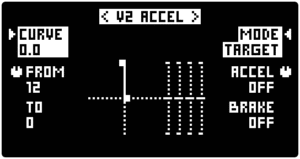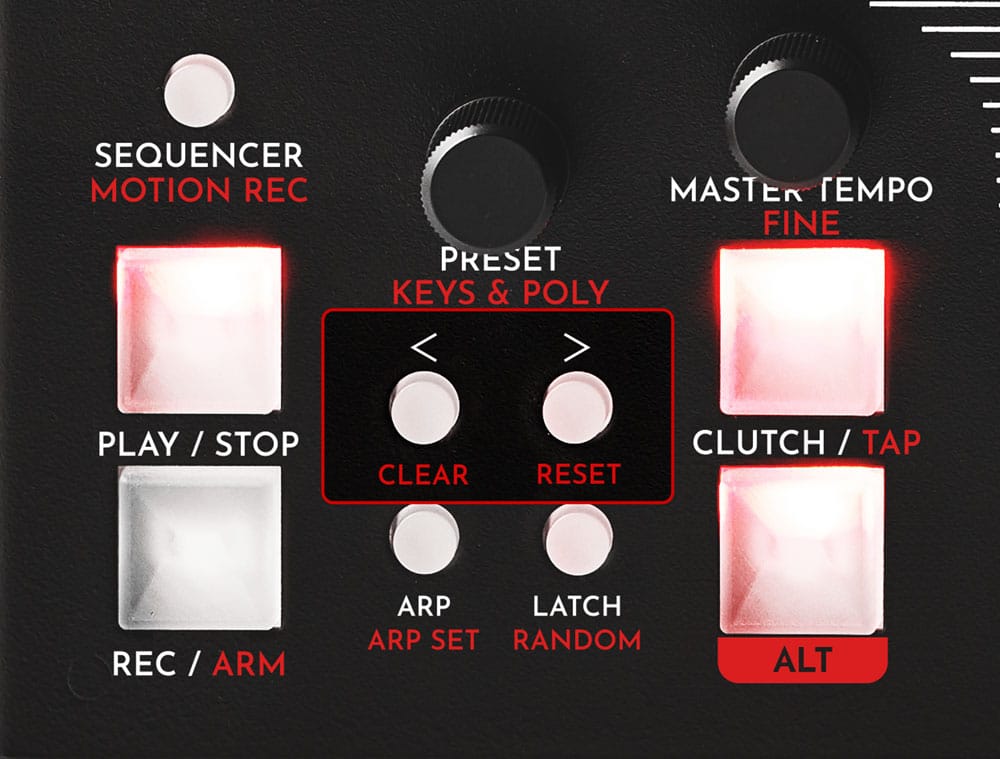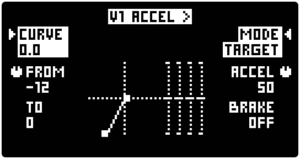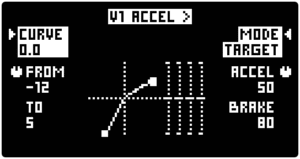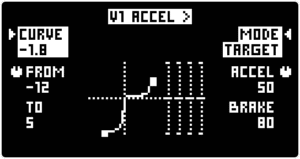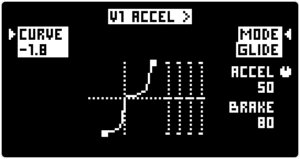4.2 List of parameters
ACCELERATION / BRAKE is controlled with two rotary knobs FROM / TO and ACCEL / BRAKE for each MOTOR VOICE and there are also additional parameters in the ACCEL / BRAKE SCREEN controlled with the ▷ LEFT & ◁ RIGHT SCREEN ENCODERS.
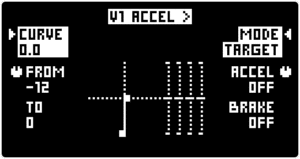
This list contains an overview of all parameters in this section. For further information refer to the Instructions sub-section.



